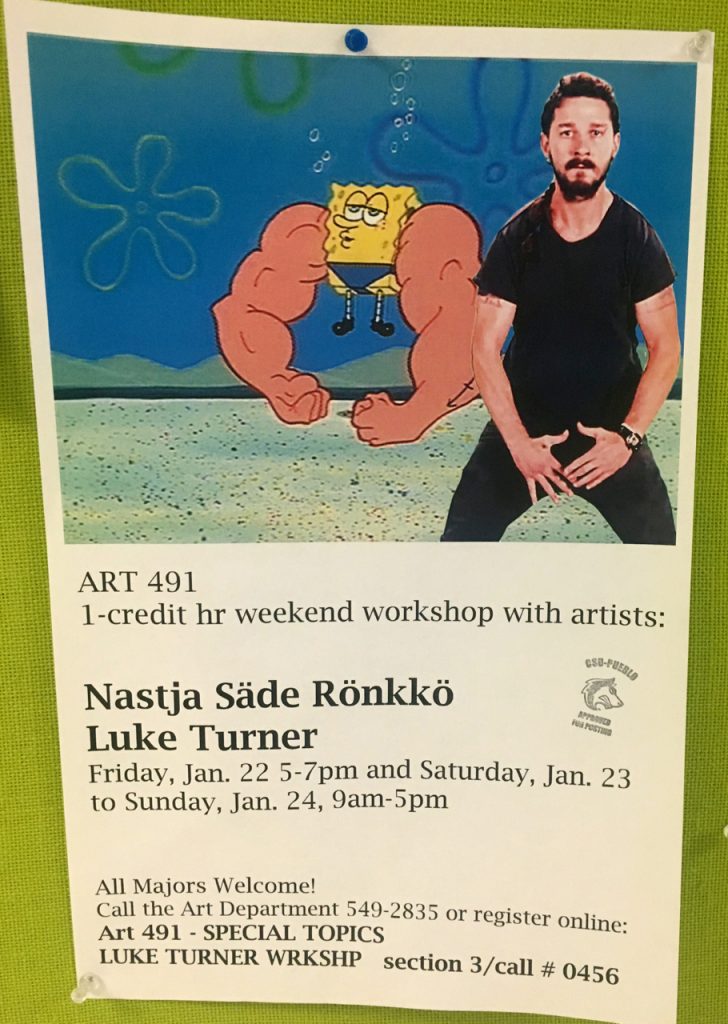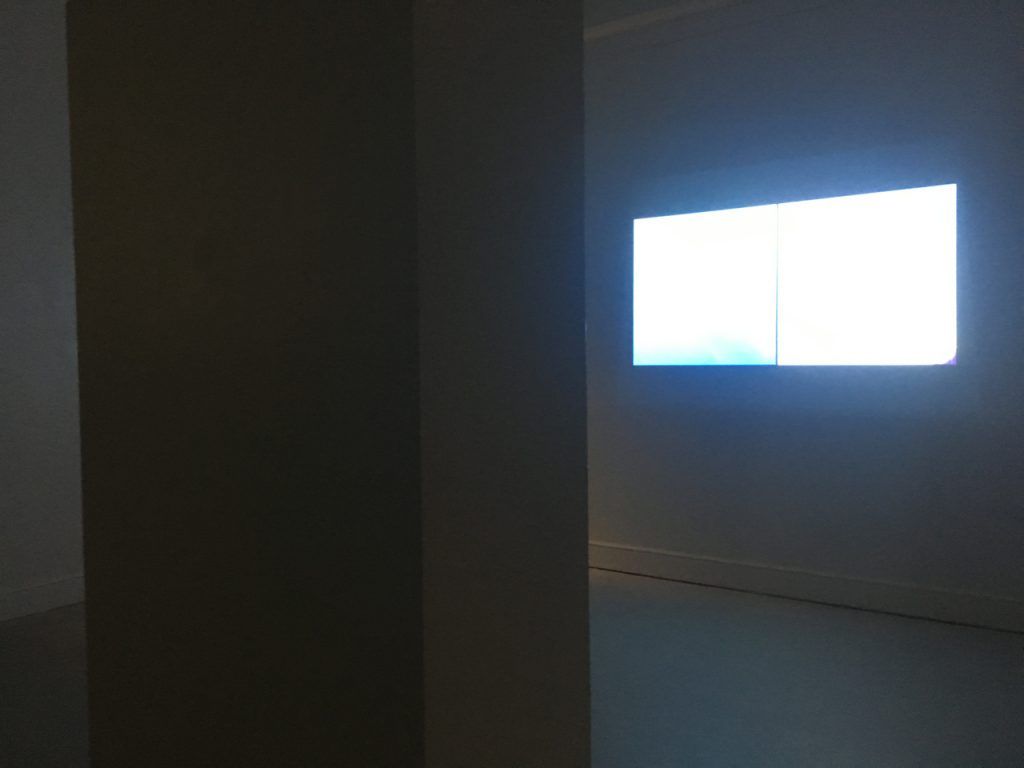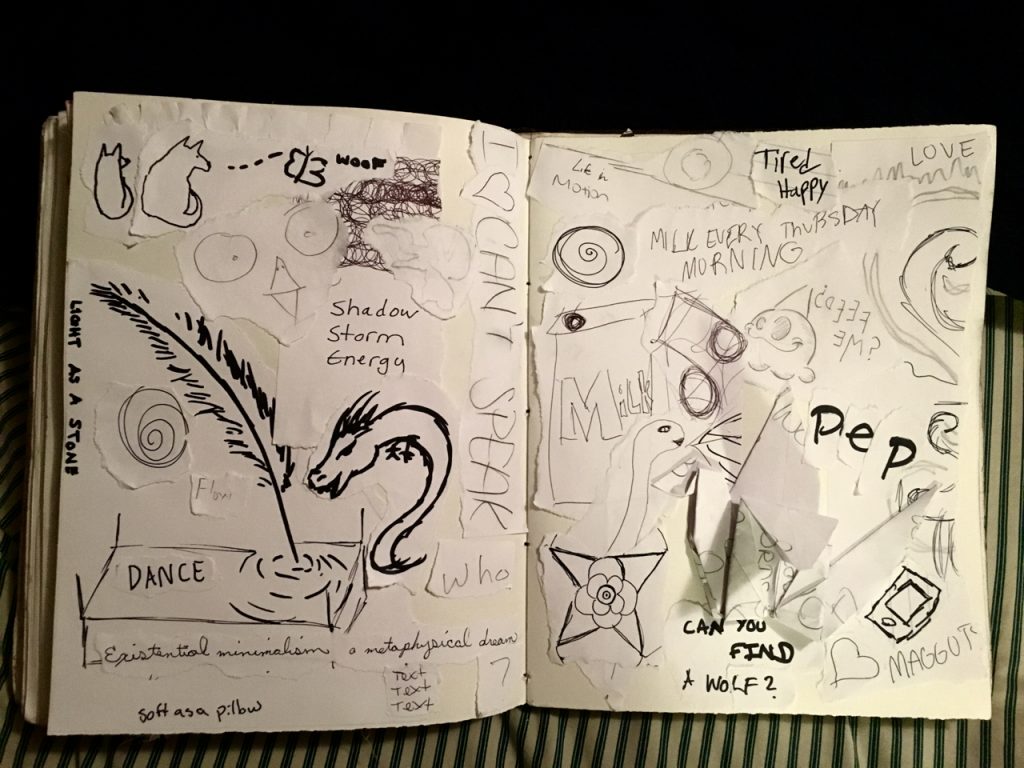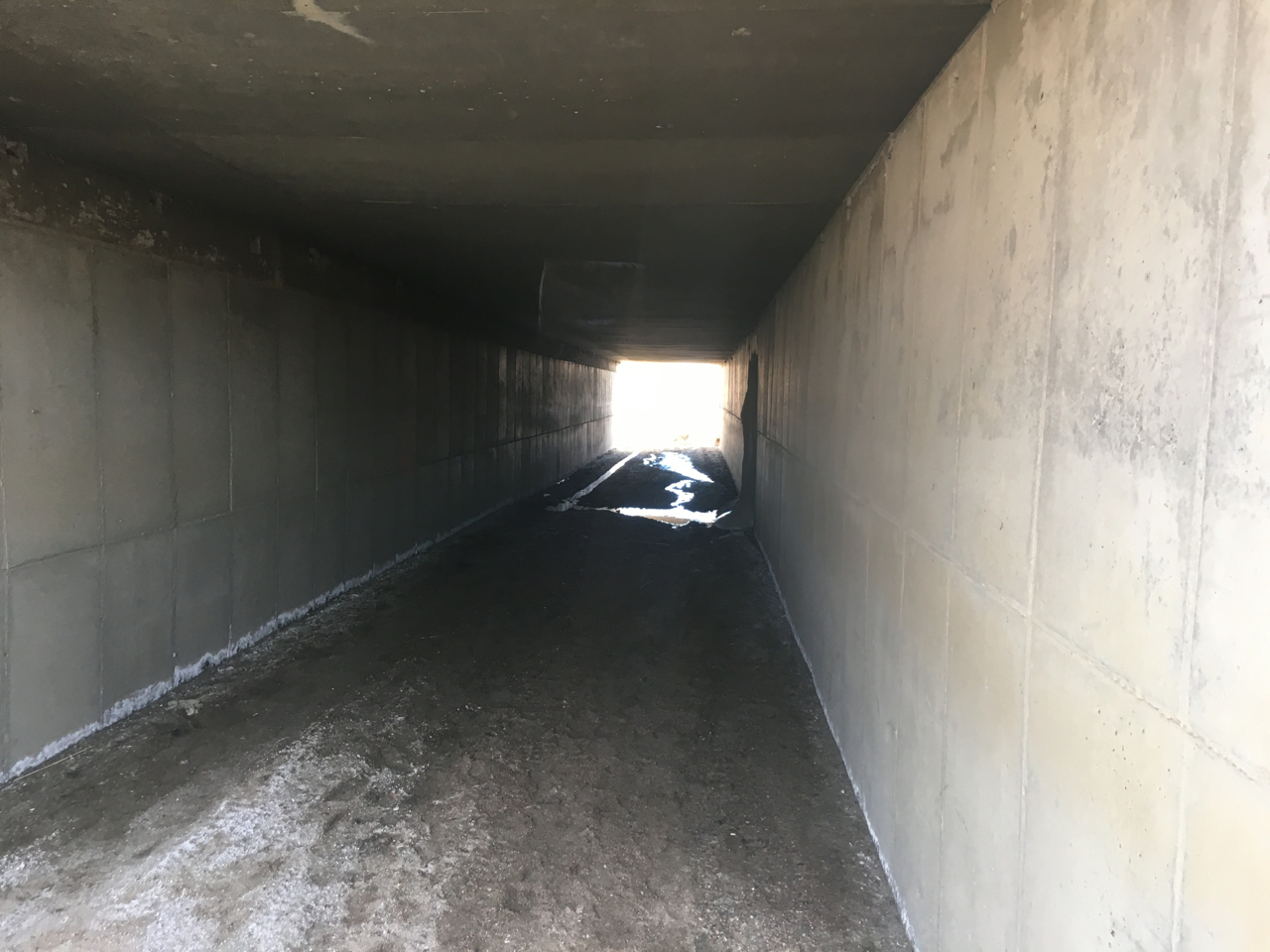During the weekend of January 22nd to January 24 2016, Colorado State University Pueblo hosted a workshop with Luke Turner and Nastja Säde Rönkkö. Focused on performance art, the workshop asked the participants to expand their understanding of art and consider new parameters in the conceptualizing of their own work.

The workshop began on friday evening with a slide lecture and a question and answer session. There, Luke Turner introduced us to the the MetaModernist Manifesto, which he wrote many years ago. In the manifesto Turner identifies the essential nature of the world as one of oscillation. Life, art and its energies move from one pole of awareness, represented as the naïvety of modernism to another, the cynicism of post modernism. MetaModernism moves effortlessly between these two poles, creating sophisticated art that is complex and intelligent with a sense of humor, yet still seeks beauty and honest emotional engagement. Read the manifesto here.

The conversation revolved around the collaborative works, inspired by the manifesto, of LaBeouf, Rönkkö & Turner. While this work was familiar to me, I did not realize it was performance art. Part of the reason for this confusion was that one of the collaborators, Shia LaBeouf, is an actor with massive media presence, so that work of the performances are usually shrouded in reports of the actor loosing his mind etc. Joining the conversation half way through via Skype however, the participants could see him through the lens of art rather than celebrity and found an honest and vulnerable person and not an object for worship or disdain. In his own words, the art that he has made over the last several years has given back his human citizenship. I took this to mean that he could see himself as one among the human community and not finding himself placed above and beyond. A place that would inevitably cause the loneliness and isolation that has been a characteristic of much of his life. Through the works of Labeouf, Rönkkö and Turner, he has been able to connect deeply with people on the most basic level, his presence on the other hand, gives the work a visibility and relevance that it might not enjoy without the star power he brings. This circumstance seems to encapsulate MetaModernism perfectly, simultaneously embracing and rejecting celebrity as one of the basic tenants of our culture and from the turmoil of holding two opposing beliefs at once, making new work, and a new way of seeing.

Nastja Säde Rönkkö was the primary guide of the workshop. We met early Saturday morning to a room of desks in rows. There, Nastja unpacked more deeply the underpinnings of performance art and showed us some pieces via photo and video that she found inspiring. Her assertion that intuition is a primary tool for relating to the self, and ones culture and society resonated particularly with me, as it seems the essential impulse to all art making. That this work was in fact coming from the same fount and tradition as that of object makers, only that the forms have changed to better reflect culture and society. If self could be defined as all things, then art too is all things.
So then as we began to think of performance in more formal terms, we were given to understand that composing performance art is within time, and words that relate to time, such as rhythm and impulse are of particular importance to its creation. This combined with the body, its feelings and perceptions within time, become the structure of the work generated.
While I had a good deal of academic experience with performance as a byproduct of my study of video art, I have practiced it only very little. This lack of real experience with performance was common among the participants of the workshop. Most in fact had no idea what to expect from the experience. This was a valuable commonality, as it allowed us all to begin at the beginning and to dispense with the “cred throw down” that can be so common to workshops.
We began with exercises that served the dual purpose of getting us comfortable and acquainted with each other quickly and helping us drop our social guard so that we might make authentic experience. These exercises often involved touching or sharing with virtual strangers in ways that were so immediately intimate that within a half a day, we were all feeling safe and among friends. As I’ve often told my students, you need to feel safe to really let go and make good art, and never have I seen a time when this was more true.
The exercises gave way to short, one minute performance piece based on a structure, an object we brought, or a film we had seen and so on. As the weekend progressed these pieces became more dynamic and personal, reflecting how quickly the group was learning to swim in the new medium.
Twice during the workshop we went for long hikes through the prairie, where nature became another collaborator, and the sometimes suffocating feeling of being too long in one room could be shaken off. The exercises and performances that occurred out on these adventures became very powerful, particularly the large group pieces done at the end of the workshop. I believe there was a video shot of one of these, I’ll update if I find it. In the mean time, click the link below for images of the experience posted to Flickr by the CSUP Today.
https://www.flickr.com/photos/csuptoday/sets/72157661684628243/with/24622839016/
My personal last piece of the workshop revolved around an a sort of paper free for all collaboration done in 5 minutes. While it was not enough time to really give the objects much of a presence at the scale I had laid out, I reduced the pieces down over the following week and made a collage, it remains a wonderful memento from an experience I will draw from for years. While I can’t see myself really entering performance seriously, the techniques learned and the genuine integrity sought is likely to influence my video work deeply.

